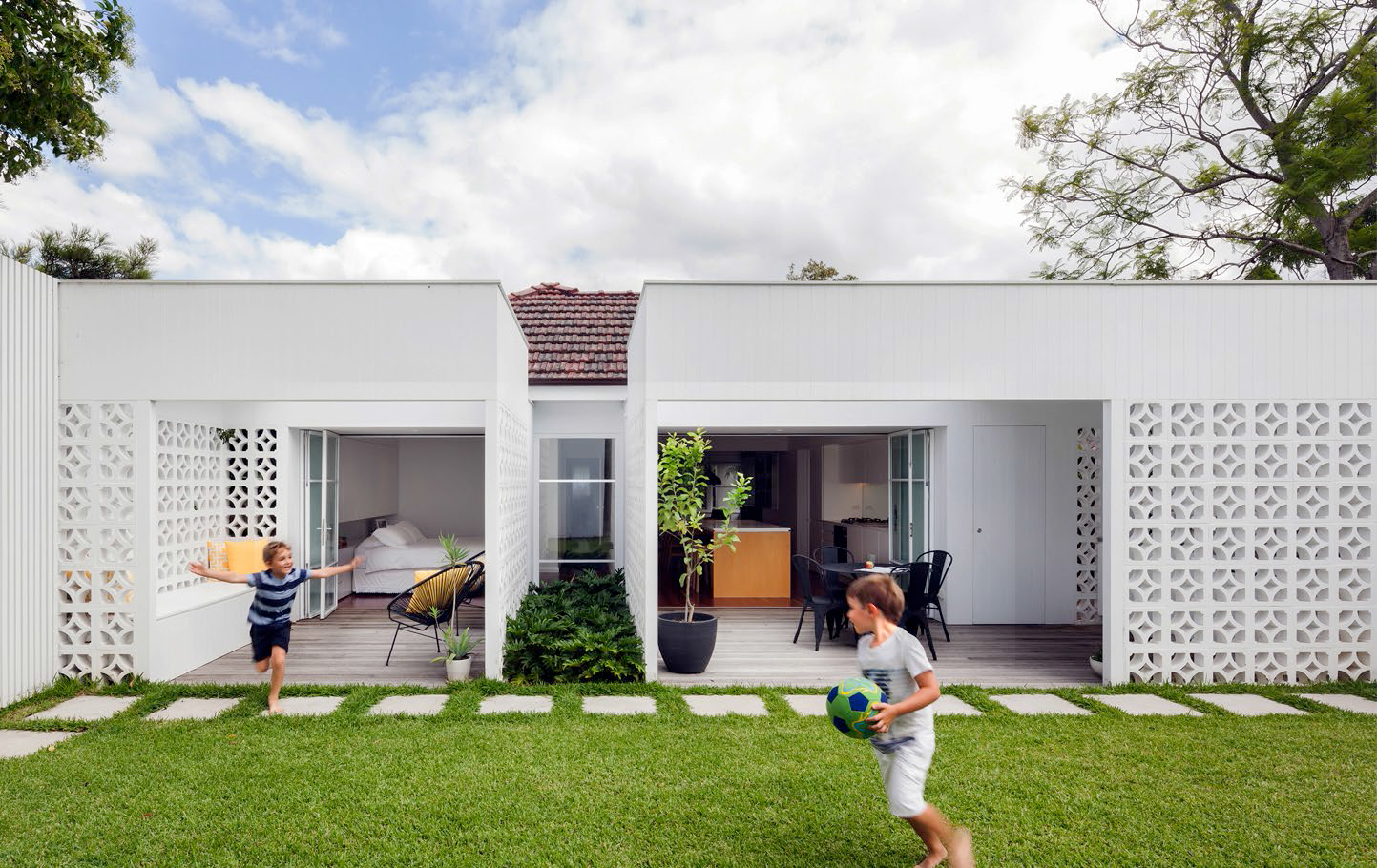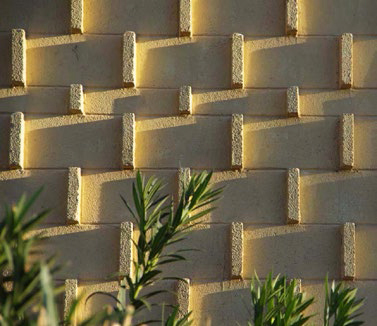Blocks of Beauty - Page 4
 |
|
|
 |
|
|
 |
|
|
 |
|
|
Decorative blocks, particularly screen blocks, were also used profusely in commercial architecture, embellishing banks, small offices, and shopping strips.
In California, no city is a better place for enjoying decorative block than Palm Springs. Modern tracts show off screens with triangular, circular, and diamond patterns, and patterns too complex to describe; and projecting blocks that are rectangular, paired, or patterned like fabric.
In compiling their book, Ron and Barbara Marshall say they have catalogued more than 250 patterns—and they are counting only screen blocks, not shadow or textured blocks.
Many patterns are beautiful. And many patterns cannot be detected by looking at a single block, but emerge only through a grouping of blocks.
Adding to the aesthetic appeal is how light that hits blocks can change a block's appearance throughout the day, adding shadows on the exterior, and patterns of light in openings. Some blocks also change color at sunset and dawn, or in the light of the moon.
"I like the shadow box 3-D effect of many of our patterns," Jack LeVine writes. "When the sunlight is just so, it changes the whole feel of the design."
Screen blocks (or breeze blocks as they were called in Australia) and shadow blocks have been used across the globe, notably in warm, southern climes. Hot spots include Florida, the Southwest, New Zealand. "Screen block occasionally pops up internationally, with multiple sightings in South America and Africa," the Marshalls write.
But international appeal did not save them. By the 1970s, decorative blocks were falling out of favor. Writing in the article, 'The Grille is Gone: The Rise and Fall of Screen Block,' Anthony Rubano of the Illinois Historic Preservation Agency blamed several culprits—including the very popularity of the material. "Its resulting prevalence signaled its demise as a high-style motif," he wrote.
The Marshalls surmise that better air-conditioning and window film made the cooling effect of screen blocks less popular.
Today, screen blocks seem on their way back, the Marshalls say. They've been noticing their increasing use around Palm Springs, often added to mid-century tract homes—though, Barbara says, "The blocks that are available today are only a couple of patterns, not the more interesting vintage molds."
And screen blocks are being celebrated by "a whole raft of designers," Ron says—on magnets, greeting cards, even as screens for dollhouses.
At a store run by designer Jonathan Adler, Ron says, they've spotted screen block imagery on cheese knives, bottle stoppers, lamps, and tables.
"Screen block hasn't made the leap into new buildings," he says. "It will be interesting to see if it continues to percolate upward, if this resurgence gets more traction at the more serious architectural level."
Wouldn't that be breezy?
Photography: Photography: Julius Shulman (© J. Paul Getty Trust. Getty Research Institute, Los Angeles - 2004.R.10), Ernie Braun, Katherine Lu, Ron and Barbara Marshall, James Schnepf (Palm Springs Modern Living), Sean Hurt, Architect Prineas, Dave Weinstein, Tiffany Tudder, DEMcSee; and courtesy National Concrete Masonry Association, Joycie Fickett Collection, Everett Collection Historical / Alamy, Destinationpsp.com




